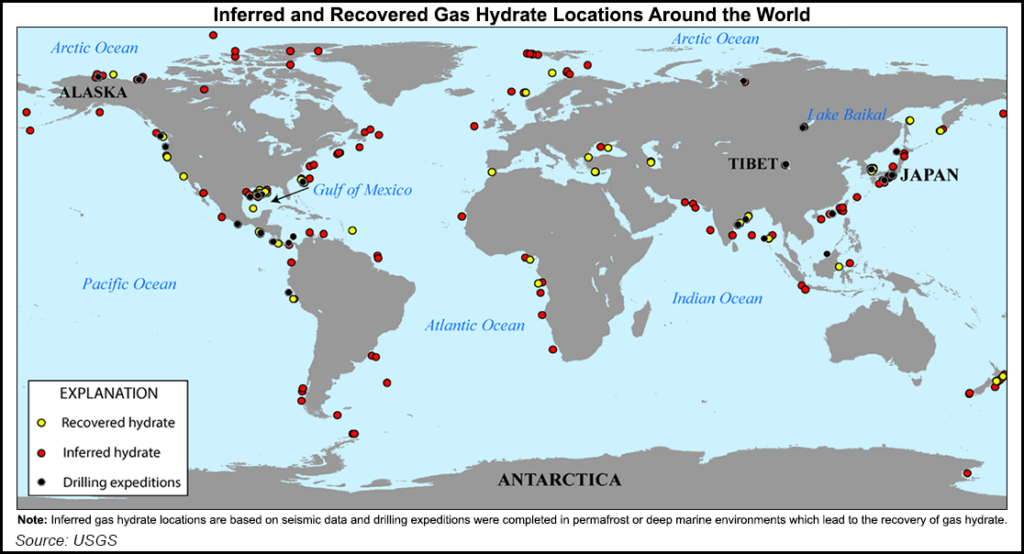NGI The Weekly Gas Market Report | E&P | NGI All News Access
UT Austin Researchers Find Novel Way to Extract Natural Gas in GOM Ice Deposits
Researchers at the University of Texas Austin (UT) have discovered that it may be possible to extract natural gas by injecting air and carbon dioxide (CO2) into methane ice deposits buried beneath the Gulf of Mexico (GOM).

Lead author Kris Darnell of the UT Jackson School of Geoscience said the research is potentially a next step in solving two significant global challenges of energy security and carbon storage.
“Our study shows that you can store CO2 in hydrates and produce energy at the same time,” said Darnell.
The journal, Water Resources Research, had research funded by the UT Institute of Geophysics (UTIG) and supported by the Department of Energy (DOE). The study used computer models to simulate what happens when methane hydrate is injected with mixtures of CO2 and air.
Methane hydrate is an ice-like, water-rich chemical compound that forms naturally in high-pressure, low-temperature environments, such as deep in the GOM and under Arctic permafrost. Nitrogen in the injected air sweeps the methane toward a production well and allows CO2 to take its place.The process allows for gas to be extracted from the deposits while storing CO2, as opposed to the CO2 being released into the atmosphere.
The computer simulations indicated that the process may be repeated with increasing concentrations of CO2 until the reservoir is saturated. The authors said unlike some methods of carbon storage, the research provides an incentive for industry to begin storing CO2, considered a major driver of climate change.
Earlier attempts of the process had been made, but they have either failed or produced underwhelming results, according to the researchers.
The next step is to test the UTA team’s findings in a lab, Darnell said. The Jackson School and UT Hildebrand Department of Petroleum and Geosystems Engineering are currently testing the process in a specialized facility.
Co-authors included UTIG research scientist Peter Flemings, with UT Hildebrand Professor David DiCarlo leading the lab testing.
© 2024 Natural Gas Intelligence. All rights reserved.
ISSN © 1532-1231 | ISSN © 2577-9877 | ISSN © 1532-1266 |
